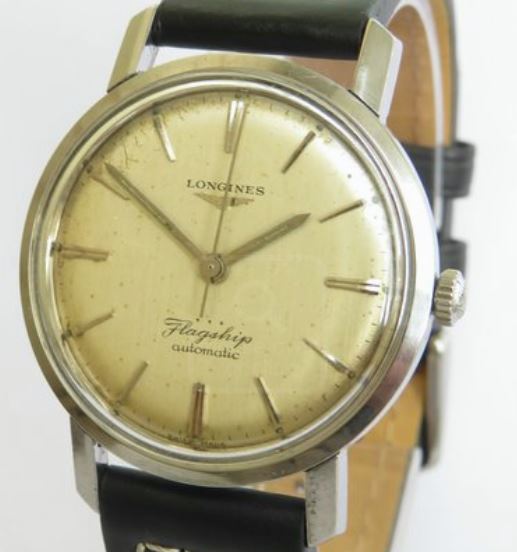Last Updated on June 27, 2024 by Jason
Longines was founded in Saint-Imier, Switzerland in 1832 by Auguste Agassiz, a Swiss watchmaker. Auguste had two business partners, Henri Raiguel and Florian Morel. The company’s original name was Raiguel Jeune & Cie. Initially, the company produced watches according to the établissage system. By 1846, Henri and Florian had retired from the watch industry, leaving Auguste as the sole company head.
Auguste was forced into early retirement by poor health in the early 1850s. He brought in his nephew, Ernest Francillon in 1852 to take control of the business. Auguste remained a partner in the business until he died in 1877. Ernest was innovative and made numerous changes and modernisations. In 1866, he purchased land south of Saint-Imier and built a factory in an area known as les longines, the long meadows.
In these early days of watchmaking, typical movements had cylinder escapements wound with keys. However, Ernest decided against the key-wound mechanisms and from 1867 only produced keyless watches wound via the crown. Ernest brought in Jaques David to help transition the company away from the traditional établissage system. Jaques was put in charge of operating the new factory and the new mechanised systems. It was in 1867 when the company adopted the name of Longines.
In-house movements
In 1876, Ernest sent a delegation headed by Jaques to the World’s Fair in Philadelphia. They witnessed first-hand how the mechanised systems had revolutionised the watchmaking industry in the US. The American system allowed the mass production of quality movements. The delegates returned home to implement the processes in the Longines factory. By 1880, Longines had developed the production capability to move away from its movement suppliers and create all its movements in-house.
The company produced many notable in-house movements that were known for their quality and precision. One of their movements produced in 1878, was the 20H chronograph, which allowed them to produce precise stopwatches for sporting events. The 20H movement allowed all chronograph functions, start, stop and reset, to be controlled by the crown. Initially, Longines built their timekeeping reputation in equestrian sports, but gradually moved on to others over time. The brand continues to be associated with world-class sporting events, such as the French Open tennis.
Logo and awards
In 1889 Longines registered its distinctive winged hourglass logo. It remains unmodified after all of this time and is recognised as the oldest continuous registered trademark. Longines has won numerous awards during its history. As early as 1867, Longines was winning awards at the Universal Exhibition in Paris. They went on to win a total of 10 ‘Gran Prix’ awards at World Fairs, the most by any watchmaker. For much of the 20th century, Longines used this success in their advertising. They promoted their watches as the ‘The World’s Most Honored Watch’.
In 1919 Longines became the official supplier of the International Aeronautical Federation. Longines specially developed high-precision navigation timepieces and instruments for the aviation industry. In 1927, Charles Lindbergh conducted the first solo flight over the Atlantic Ocean. He had experienced positioning difficulties during his flight. Following his transatlantic feat, Lindbergh worked with Longines to develop an aviation watch that would easily allow any pilot to quickly and easily determine their longitude position while simultaneously operating a flight. In 1961, Longines acquired the Record Watch Company (est. 1903), through a majority purchase of shares.
Later 20th century
Longines continued to innovate throughout the 20th century. During the Second World War, they were one of the 12 manufacturers commissioned by the British War Department to produce high-quality military watches. These were later known as “The Dirty Dozen“. Following the war, Longines produced several signature collections that remain sought after by vintage watch collectors:
Longines Conquest: Introduced in the 1950s, the Conquest collection featured elegant and sporty timepieces designed for both formal occasions and sporting events. These watches often featured automatic movements and water-resistant cases.
Longines Flagship: Launched in the 1950s, the Flagship collection represented Longines’ commitment to precision and elegance. These watches typically feature clean and classic designs with slim cases and understated dials.
Longines Admiral: The Admiral collection, introduced in the 1960s, was inspired by maritime themes and featured sporty yet sophisticated designs. Many Admiral watches featured chronograph functions and distinctive dials with nautical motifs.
Longines Ultra-Chron: In the 1960s, Longines introduced the Ultra-Chron collection, which included watches equipped with high-frequency movements for enhanced accuracy. These watches were highly regarded for their precision and reliability.
Longines Grand Prize Automatic: This collection, introduced in the 1960s, featured automatic watches designed to commemorate Longines’ victories in precision competitions. The watches often featured intricate dials and high-quality movements.



